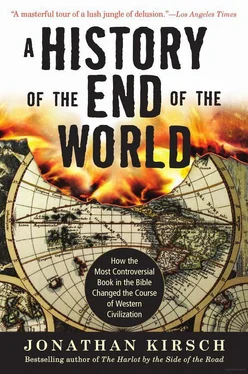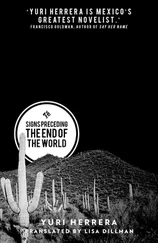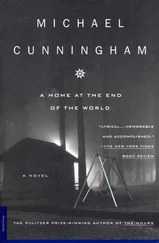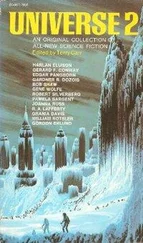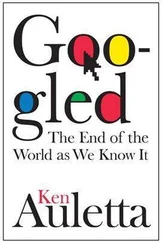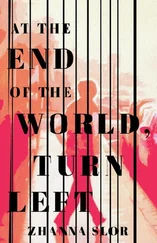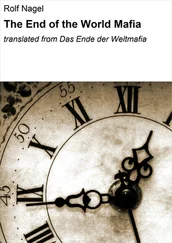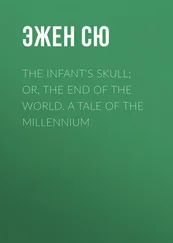“Revelation either finds a man mad,” quipped one exegete, “or leaves him so.” 18
Revelation is so shackled by its own riddles and ciphers and symbols that the text must be decrypted rather than merely read. “[E]ither it has been abandoned by the readers of the Bible as being almost completely unintelligible,” observes a twentieth-century Bible scholar, “or it has become the happy hunting ground of religious eccentrics.” 19One medieval theologian, for example, was moved to scribble out more than one thousand pages of exegesis in an effort to explain his own understanding of Revelation, which itself consists of only twelve thousand words or so in the English translation of the King James Version. Still, the cast and plot of Revelation—the raw material out of which the author composes one of the great and enduring works of the human imagination—can be summed up with far fewer words.
The book of Revelation consists of a series of prophecies about the future, most of them eerie and scary. To be sure, the author opens with a few words of grudging praise or, more often, bitter denunciation for his fellow Christians, most of whom he finds to be complacent, gullible, self-indulgent, and woefully lacking in zeal. “Because you are lukewarm,” he tells the church at Laodicea, attributing his admonition to God himself, “I will vomit you out of my mouth.” 20Now and then, he embellishes the text with a few pious beatitudes that are intended to authenticate his visions: “And behold, I am coming soon. Blessed is he who keeps the words of the prophecy of this book.” 21
Mostly, however, the author of Revelation devotes himself to an account of the disturbing sights that he has seen during a vision that came to him on the island of Patmos off the west coast of Asia. The author has achieved a trancelike state of mystical ecstasy in which he sees, among a great many other and even odder things, a scroll on which is written God’s secret plan for the end of the world. The scroll has been closed with seven seals, presumably of wax or clay, and all seven seals must be broken before the scroll can be opened and read.
Here begins the single most insistent motif of Revelation—the author’s almost obsessive use of the number seven. He sees not only seven seals but also seven angels, seven bowls, seven candlesticks, seven churches, seven crowns, seven eyes, seven heads, seven horns, seven kings, seven lamps, seven mountains, seven plagues, seven spirits, seven stars, seven thunders, and seven trumpets. The story of Revelation, such as it is, focuses on what will happen in heaven and on earth when, after the ever-mounting terror of the last days finally reaches a climax, the seventh trumpet is sounded, the seventh bowl of God’s wrath is poured out, and the Lamb of God breaks the seventh seal.
The celestial figure who reveals the divine plan for the end of the world is variously called “one like unto the Son of Man,” “the Son of God,” “the Spirit,” and “the Lamb”—all of which are terms borrowed from Jewish messianic tradition. The author also coins an elegant and enduring phrase that appears nowhere else in Christian scripture: “I am Alpha and Omega, the beginning and the ending.” 22Only rarely does he invoke the unambiguous name and title of “Jesus Christ,” and he prefers to conceal the identity of his celestial source in puzzles and riddles: “I am He who lives, and was dead, and behold, I am alive forevermore,” says the nameless visitor by way of self-introduction, “and I have the keys of Hades and of Death.” 23
Then, too, the deity who stalks the pages of Revelation is a shape-shifter. At the outset, he is a celestial king dressed in a golden robe, with hair “as white as snow,” eyes “like a flame of fire,” holding seven stars in his right hand, “and out of His mouth went a sharp two-edged sword.” 24Later, the author beholds the odd and eerie figure of a lamb, looking “as though it had been slain,” and yet standing upright, with “seven horns and seven eyes.” 25At the climax of Revelation, the author sees a divine warrior mounted on a white horse, crowned with “many diadems” and wearing a bloodstained robe. Here, too, the author engages in conjuration of the now-you-see-it, now-you-don’t variety: “He has a name inscribed which no one knows but himself,” the author writes—and then, a moment later, he reveals: “On his robe and on his thigh he has a name inscribed, King of kings and Lord of lords.” 26
The most memorable characters in the cast of Revelation, however, are the bad guys. The arch-villain is “a great red dragon, having seven heads and ten horns, and seven crowns upon his heads,” who is later revealed to be “that ancient serpent who is called the Devil and Satan, the deceiver of the whole world.” 27The earthly agents of the Devil are two “beasts,” one with seven heads and ten horns who emerges from the sea, and the other with two horns and a voice “like a dragon,” who emerges from the land. 28And there are cameo appearances by false prophets and prophetesses, corrupt and decadent kings in great profusion, and various other malefactors, both human and demonic.
The single most provocative character in Revelation, for example, is the Great Whore of Babylon. She is depicted as a sexual monster with whom “the kings of the earth have committed fornication,” and her lovers are so numerous and far-flung that “the inhabitants of the earth have been made drunk with the wine of her fornication.” The woman is drunk, too, but her intoxicant is “the blood of the saints and the blood of the martyrs of Jesus.” She is “arrayed in purple and scarlet” and “bedecked with gold and jewels and pearls,” and she carries a golden cup in her hand as she rides on the back of the scarlet-colored beast with seven heads and ten horns. And, in a startlingly explicit image, the author points out that the cup itself is “full of abominations and impurities of her fornication.” 29
Just as the Lamb is the counterpart of the Dragon, the counterpart of the Great Whore is the celestial figure of “a woman clothed with the sun, and the moon under her feet, and upon her head a crown of twelve stars.” At the very moment when the woman goes into labor, the red dragon sets upon her, waiting to devour her newborn baby. When she gives birth to “a man child, who was to rule all nations with a rod of iron,” the newborn is snatched up to God’s heavenly throne, and the woman is given “the two wings of a great eagle, that she might fly into the wilderness,” where she will be nourished and sheltered from the predatory dragon. Meanwhile, a battle is fought in heaven between Satan and the archangel Michael, each one at the head of an army of angels. Satan is defeated and cast out of heaven, but he descends safely to earth and sets out to establish a kingdom over humankind. 30
Indeed, the only way for God to defeat the Devil and his servitors, according to the author, is to destroy the world and start all over again with “a new heaven and a new earth.” But the end-times are wired to a slow-burning fuse. First, the Christian true believers must endure a period of oppression and persecution—the so-called Tribulation—at the hands of Satan’s deputies, including the “beast” who is nowadays better known as the Antichrist, although the latter term itself does not appear in the text of Revelation. The beginning of the end will be signaled by signs and wonders: earthquakes and floods, comets and eclipses, famine and plague and pestilence, and a series of mighty battles in heaven and on earth.
The afflictions of the end-times are described in some of the most memorable passages in the Bible. For example, the famous Four Horsemen of the Apocalypse, each rider mounted on a horse of a different color, “kill with the sword, with hunger, with death, and by the beasts of the earth.” What we might understand as natural disasters are described in fanciful language: “The sun became black as sackcloth, and the full moon became like blood, and the stars of the sky fell to earth.” And the author conjures up monsters like nothing in nature. When he describes a flight of locusts, for example, they are insects with the face of a man, the long hair of a woman, the body of a warhorse, the teeth of a lion, and the stinging tail of a scorpion. 31
Читать дальше
